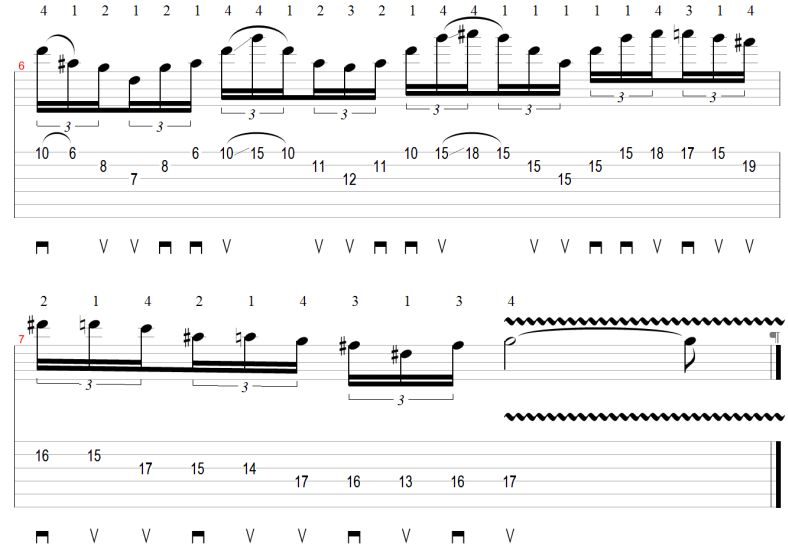How To Become A Great Neoclassical Guitarist - FREE 14 Day Neoclassical Guitar Lessons Mini Course - Part 7

Welcome to the final lesson of this free mini course on how to become a great neoclassical guitarist.
In this lesson, I am going to show you how to start tying together all the skills and techniques I have been showing you so far throughout these free neoclassical lessons.
Until now, I have been showing you techniques (such as arpeggios, pedal point licks and scale sequences) mostly in isolation. However, when these techniques are used in real neoclassical guitar solos, they are most often combined with other musical ideas and techniques in order to make true music. You have seen some examples of this in lesson 5 of this mini course when I showed you an excerpt from the song “Labyrinth of Madness” where I combined arpeggios together with string skipping and a pedal point pattern.
In this final lesson I want to tie together the concepts, techniques and ideas that I have showed you throughout the mini course and give you something special that will help you to do this.
As an ongoing assignment, I want you to practice creating your own licks and phrases by combining the most important neoclassical guitar techniques (such as the ones I have shown you in this mini course). As you do this more and more, you will move closer towards becoming the ultimate neoclassical guitar maestro! This is one of the most important skills that I train my guitar students to develop in my Neoclassical Revelation course as I teach them many examples of actual neoclassical guitar solos, including my own transcriptions of many of the Rhapsody of Fire guitar solos.
To get started, I will show you a few examples of how several neoclassical guitar techniques can be combined to make musical phrases that can be used in guitar solos.
Example 1

This example consists of arpeggios and a pedal point pattern played together as one lick. There are countless possibilities for combining these techniques but this is one very common way of doing so. Learn the lick slowly at first before speeding it up. Notice also that the arpeggios (in measure 2) need to be played with 6 notes per beat instead of 4 (as in measure 1). So make sure to practice at a tempo that allows you to play both measures cleanly.
Example 2

This example combines a scale sequence on one string, a pedal point and an arpeggio. The practice suggestions that I made for the last lick apply to this one as well.
Example 3

This exercise combines arpeggios with a scale sequence. This is another very common way you will see these techniques used in neoclassical music.
There are many ways to combine these techniques (as shown above), and the best way to get ideas for doing this is by studying the music of classical composers who influenced neoclassical guitar playing as well as guitar solos of neoclassical guitar masters.
When I was learning to play guitar and trying to master the neoclassical style, I spent many hours transcribing dozens of my favorite pieces by Baroque, Classical and Romantic composers and learned to play them on guitar. This helped me greatly to develop my own guitar style, and now I teach these same transcriptions to my guitar students.
Learning to play classical pieces on guitar will greatly help you with creating your own musical ideas in this style and will help you to feel like a true musician instead of only a ‘guitar player’.
Challenging guitar techniques such as sweep picking, and string skipping have evolved in order to enable guitarists to play music of composers who didn’t compose music for guitar. So by learning the music which served as inspiration for these techniques you are going to make your playing much more creative as you move from focusing on “techniques” to focusing on “music”.
Throughout this mini course I have shared with you many important steps you need to take in order to develop your neoclassical guitar playing to the level you want it to be. If you are ready to take the steps necessary to become a great guitar player, then I want to help you on that journey. To begin, go to my Neoclassical Revelation Guitar Course now and fill out the evaluation form. I look forward to helping you become the ultimate neoclassical guitar maestro!
Go here to review Lesson 1 of this mini course.
Go here to review Lesson 2.
Review Lesson 3 here.
Review Lesson 4 here.
Review Lesson 5 here.
Go here to review Lesson 6 of this mini course.
